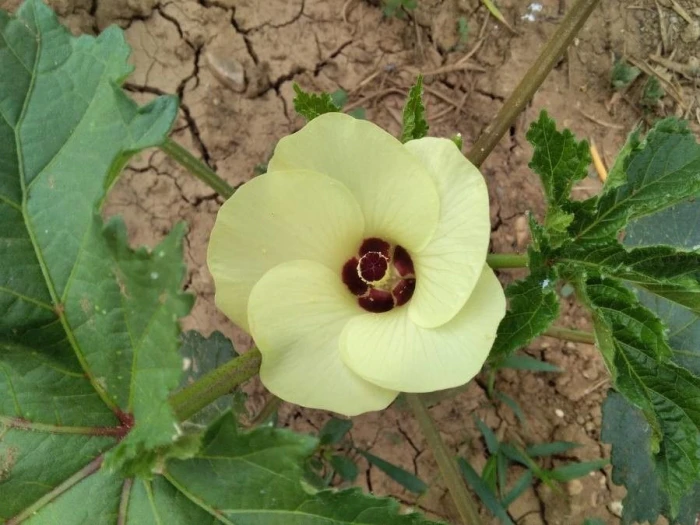Okra
(Abelmoschus esculentus)
Okra (Abelmoschus esculentus)
/
/

Pokotilo Olga
CC BY-SA 4.0
























































Estimated Native Range
Climate Requirements for Rishon LeTsiyyon, Israel
| This Plant | Your Site | Plant Suitability for Your Location | ||
|---|---|---|---|---|
| • Precipitation | 0" - 183" | 22" | Your precipitation may be insufficient for this plant. Irrigate N" / year. | Irrigate N" / year |
| • High Temp. | 64°F - 111°F | 87°F | Your summer temperatures are normal for this plant. | Excellent |
| • Low Temp. | -2°F - 74°F | 46°F | Your winter temperatures are normal for this plant | Excellent |
Summary
Okra is valued for its heat and drought tolerance, making it suitable for cultivation in challenging environments. It is also appreciated for its nutritional seed pods, which are rich in fiber, vitamins, and minerals. Okra is commonly used in culinary dishes, such as stews and soups, and can be fried, grilled, or pickled. It thrives in full sun and requires soil temperatures of at least 20 °C (68 °F) for optimal germination. The soil should be slightly acidic, with a pH between 5.8 and 7.0. Okra benefits from medium to high water availability and medium soil drainage. While it tolerates heavy clay soils, frost can be detrimental to the pods. Seedlings need consistent watering, and the first harvest usually occurs about two months after planting when the pods are 2-3 inches long.CC BY-SA 4.0
Plant Description
- Plant Type: Herb
- Height: 3-5 feet
- Width: 3-5 feet
- Growth Rate: Rapid
- Flower Color: Yellow
- Flowering Season: Summer
- Leaf Retention:
Growth Requirements
- Sun: Full Sun
- Water: Medium, High
- Drainage: Medium
Common Uses
Bee Garden, Border Plant, Butterfly Garden, Drought Tolerant, Edible*Disclaimer: Easyscape's listed plant edibility is for informational use. Always verify the safety and proper identification of any plant before consumption., Potted Plant, Showy Flowers
Natural Habitat
native to regions in Asia with a warm climate and is adapted to grow in open woodlands and scrub areas
Other Names
Common Names: Gumbo, Okro, Lady’s Fingers, Lady’s-Fingers, Quiabo, Kacang Bendi, 黃秋葵
Scientific Names: Abelmoschus esculentus, Hibiscus esculentus, Hibiscus hispidissimus, Abelmoschus tuberculatus, Hibiscus bammia, Abelmoschus bammia, Abelmoschus esculentus subsp. praecox, Abelmoschus esculentus subsp. textilis, Abelmoschus esculentus var. praecox
GBIF Accepted Name: Abelmoschus esculentus (L.) Moench